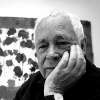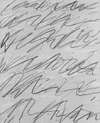Jean-Paul
Riopelle
Jean-Paul Riopelle, a tour de force of abstract expressionism, hails from Montreal, captivating with his mosaic-like paintings. If you’re looking for original Jean-Paul Riopelle prints and editions for sale, or would like to sell, request a complimentary valuation and explore our network’s most in-demand works.
Notable series
Jean-Paul Riopelle art for sale
Discover Jean-Paul Riopelle prints for sale, exclusively available through our private network of collectors. Explore signed and unsigned screenprints, lithographs, digital prints, and rare editioned proof prints by era-defining blue chip artists.
Sell Your Art
with Us
with Us
Join Our Network of Collectors. Buy, Sell and Track Demand
Biography
Born in Montreal in 1923, Riopelle displayed an early affinity for the arts, which was nurtured through an education at the École des Beaux-Arts and the École du Meuble in Montreal. His formative years were marked by a rigorous exploration of various styles and media, but it was his venture into abstract art that truly defined his creative direction. The young artist's burgeoning talent did not go unnoticed; his participation in the 1945 exhibition La Matière Chante, alongside members of the avant-garde Automatistes group, signalled the beginning of his ascent within the art community.
Riopelle's development took a decisive turn when he moved to Paris in 1947. Immersing himself in the post-war European art scene, he forged connections with influential figures such as André Breton and became a part of the Surrealist circle. However, it was his divergence from Surrealism and his embrace of Abstract Expressionism that established his reputation. His innovative use of the palette knife and impasto technique led to the creation of his iconic mosaic paintings, with their interlocking patches of colour and dynamic surface textures that seem to dance across the canvas.
Throughout the 1950s and 1960s, Riopelle's work gained international acclaim, with major exhibitions solidifying his status as a leading figure in contemporary art. His involvement with the School of Paris and participation in the pivotal Lyrical Abstraction movement positioned him at the heart of a pivotal moment in art history.
While Riopelle's career is punctuated by numerous accolades and achievements, it is perhaps his ability to capture the raw, untamed beauty of the Canadian landscape in his later works that most resonates with audiences. The elemental force of nature is palpable in his paintings, a testament to his deep connection with his homeland.
Riopelle's legacy is one of a relentless innovator, a painter who bridged the Atlantic divide and brought a unique sensibility to the abstract expressionist idiom. His work continues to exert a profound influence on artists today, a vibrant testament to his enduring impact on the visual language of the 20th century.









































